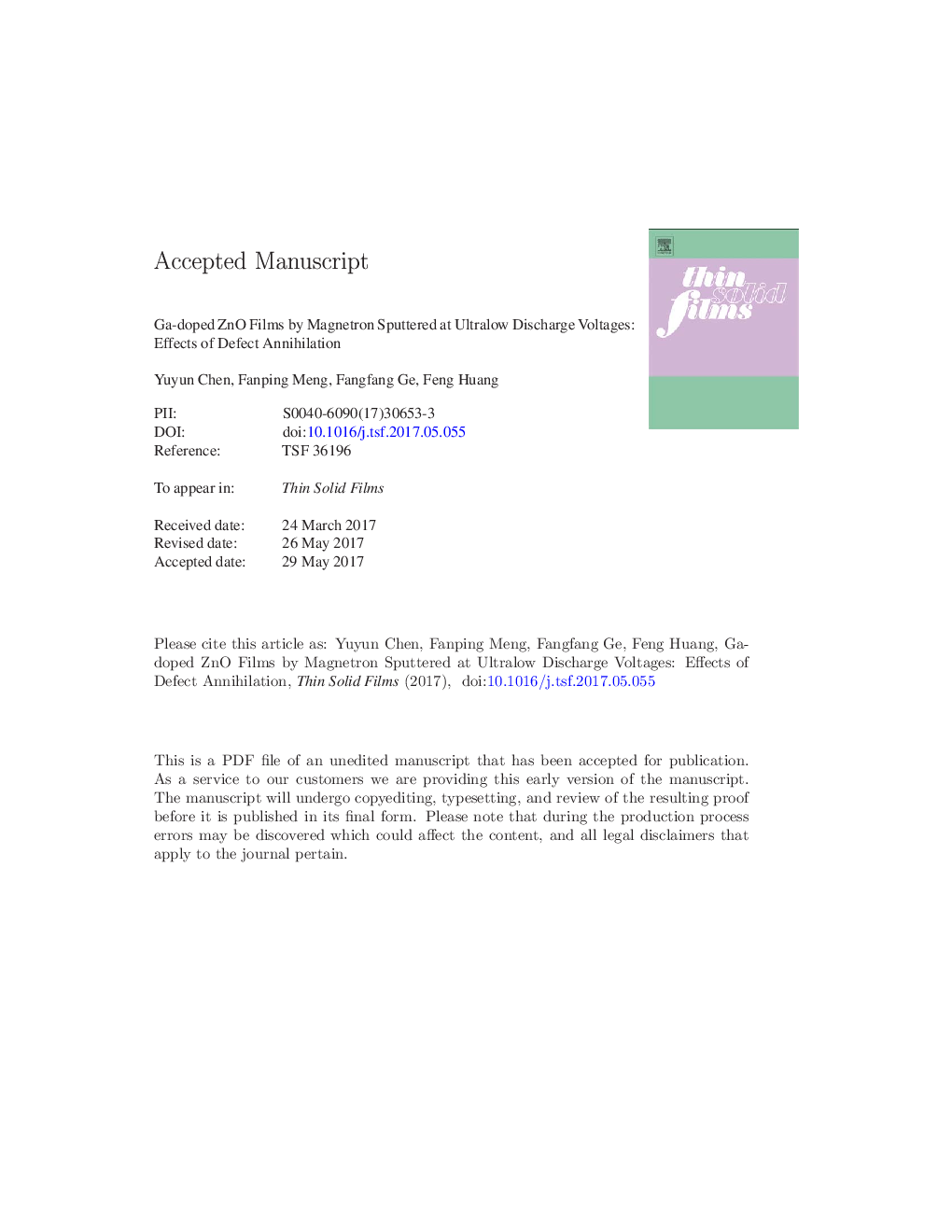| Article ID | Journal | Published Year | Pages | File Type |
|---|---|---|---|---|
| 8033262 | Thin Solid Films | 2017 | 31 Pages |
Abstract
Preparation of high quality transparent conductive oxide (TCO) films by sputter deposition involves an intricate balance of defect generation by the highly energetic negative oxygen ions (depending on the discharge voltage) and the concomitant annihilation of these defects during film growth. Ga-doped ZnO films with a low Ga content (1.7 at.%) were deposited to investigate the effects of defect annihilation on the microstructure evolutions as well as the optical and electrical properties. To achieve this aim, we prepared the GZO films by magnetron sputtering at ultralow discharge voltages (~ 70 V) to minimize the defect generation, and varied the substrate temperature (from 130 °C to 380 °C) to adjust the annihilation rates. The microstructure was systematically characterized by X-ray Diffraction (XRD), Transmission Electron Microscopy (TEM), and Raman Spectroscopy. The electrical and optical properties were obtained by a Hall-effect measurement system and Spectroscopic Ellipsometry (SE), respectively. It was found that (i) even under the condition of highly controlled defect generation from the bombardment of negative oxygen ions, a sufficient annihilation of the defects cannot be realized without externally heating the substrate; and (ii) there existed a threshold temperature, above which both the structural quality and the electrical properties were improved with the increased temperature over the temperature range we examined. These results reveal that the growth temperature during the GZO film deposition has played an important role in effective annihilation of the irradiation-induced structural defects, which may be due to the higher diffusion barrier of Ga atoms in our GZO films.
Related Topics
Physical Sciences and Engineering
Materials Science
Nanotechnology
Authors
Yuyun Chen, Fanping Meng, Fangfang Ge, Feng Huang,
